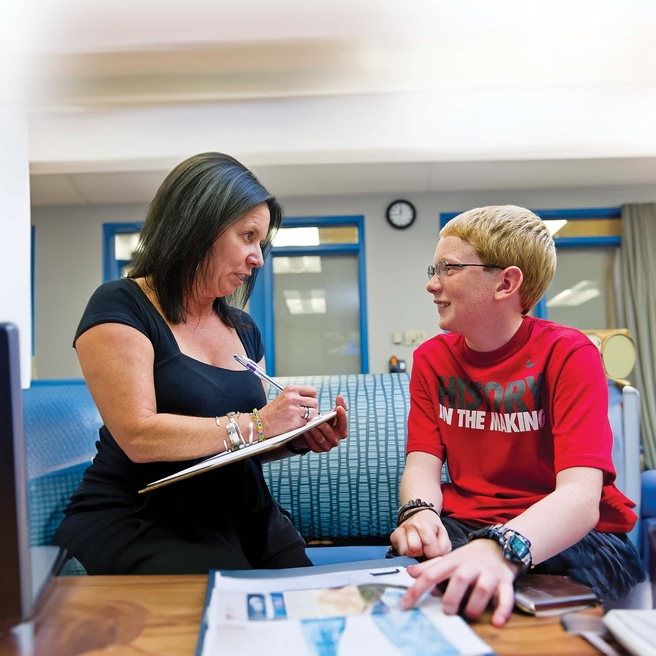What are cerebral palsy foot disorders?
Foot disorders are common in children with cerebral palsy. The most common deformity is called equinus, or plantar flexion deformities. In this condition, the foot points downwards.
This deformity is often part of a larger lower extremity deformity. Specific foot deformities are:
- Equinovarus (neuromuscular club foot) - foot points downwards and inwards.
- Equinovalgus - foot points downwards and outwards.
- Planovalgus (neuromuscular flat foot) - foot is flat and points out to the side.
- Hallux valgus (neuromuscular bunion) - big toe points toward and sometimes under the second toe.
- Pes Cavus - High arch generally seen in neuromuscular populations.
Treatment
Orthopedic surgery
Orthopedic surgeons at Children's Hospital of Philadelphia (CHOP) design surgeries to correct as many contractures as possible during a single trip to the operating room. Casting is generally needed for several weeks after surgery. Our surgeons may use the following to treat your child's cerebral palsy foot disorders.
Muscle lengthening
Muscle lengthening procedures may be performed surgically to improve joint motion and gait (walking), and to prevent deformities.
Lengthening procedures can also be used to decrease the need for bony surgery in younger children, and reduce tone on a more permanent basis than botulinum toxin (Botox).
Tendon transfers
Where botulinum toxin and medical management can globally or focally weaken a spastic muscle, they cannot alter its pull. Tendon transfers allow muscles to be partially transferred to a different location in the joint, which can improve balance of the forces across a joint.
Bony reconstruction
Bony reconstruction allows for direct restoration of anatomic position of joints or relief of rotational abnormalities which result in brace intolerance.
Joint fusion
In cases where the deformity is too severe to be managed with simple realignment, fusion can provide a durable option to provide long-term support of a patient’s skeleton.
Bracing
Foot bracing may also be useful. When our orthopedic surgeons prescribe a brace for your child, our expert orthotists will create the customized brace.
Resources to help
Cerebral palsy foot disorders Resources
Cerebral Palsy Program Resources
We have gathered resources to give you information and help you find answers to your questions. We hope this makes your family’s life a bit easier.
Reviewed by Keith D. Baldwin, MD, MPH, MSPT
